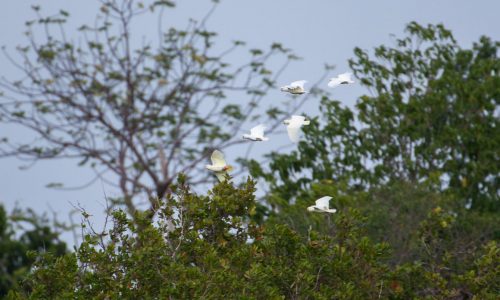Species: Sulu Hornbill Anthracoceros montani, Sulu Racquet-tail Prioniturus verticalis, Sulu Bleeding-heart Gallicolumba menagei, Philippine Cockatoo Cacatua haematuropygia ![]() Organisation: Balete Conservancy
Organisation: Balete Conservancy![]() Project title: Tawi-Tawi: The Philippine Island with The Most Endangered Species Project
Project title: Tawi-Tawi: The Philippine Island with The Most Endangered Species Project![]() Location: Languyan, Tawi-Tawi, Philippines
Location: Languyan, Tawi-Tawi, Philippines![]() Project date: March 2021 – March 2022
Project date: March 2021 – March 2022![]()
The challenge
Tawi-Tawi Important Bird Area (IBA) is important for the conservation of threatened and restricted-range bird species of the Sulu archipelago Endemic Bird Area with four ASAP species found on Tawi-Tawi island: Sulu Hornbill, Sulu Racket-tail, Philippine Cockatoo, and the possibly extinct Sulu Bleeding-heart. With high levels of endemism and unique biodiversity, it is imperative to protect the forest in which they exist. However, Tawi-Tawi has experienced significant habitat loss due to deforestation and illegal logging. These bird species, which used to be widespread across the island, are now restricted to isolated areas.
Much of Tawi-Tawi’s remaining forest is concentrated in the coastal municipality of Languyan. With no legislation for formal protection, the forests in Languyan are vulnerable to mining operations, illegal logging, and wild bird trapping. Without better protection, the remaining habitat will continue to be lost and populations of threatened species will face further and potentially catastrophic declines.
The project
Balete Conservancy’s long-term aim for this project is to establish protection for Languyan’s forests. The initial phase will focus on raising community engagement and education to gain wider support for biodiversity conservation and forest protection, while engaging with the local government to increase support for habitat protection and the establishment of Forest Community Nurseries.
Project reports
Read about the results of the project HERE.
Photo credit: Ivan Sarenas




Were all four birds found? Can foreign birders visit and see these species of birds?